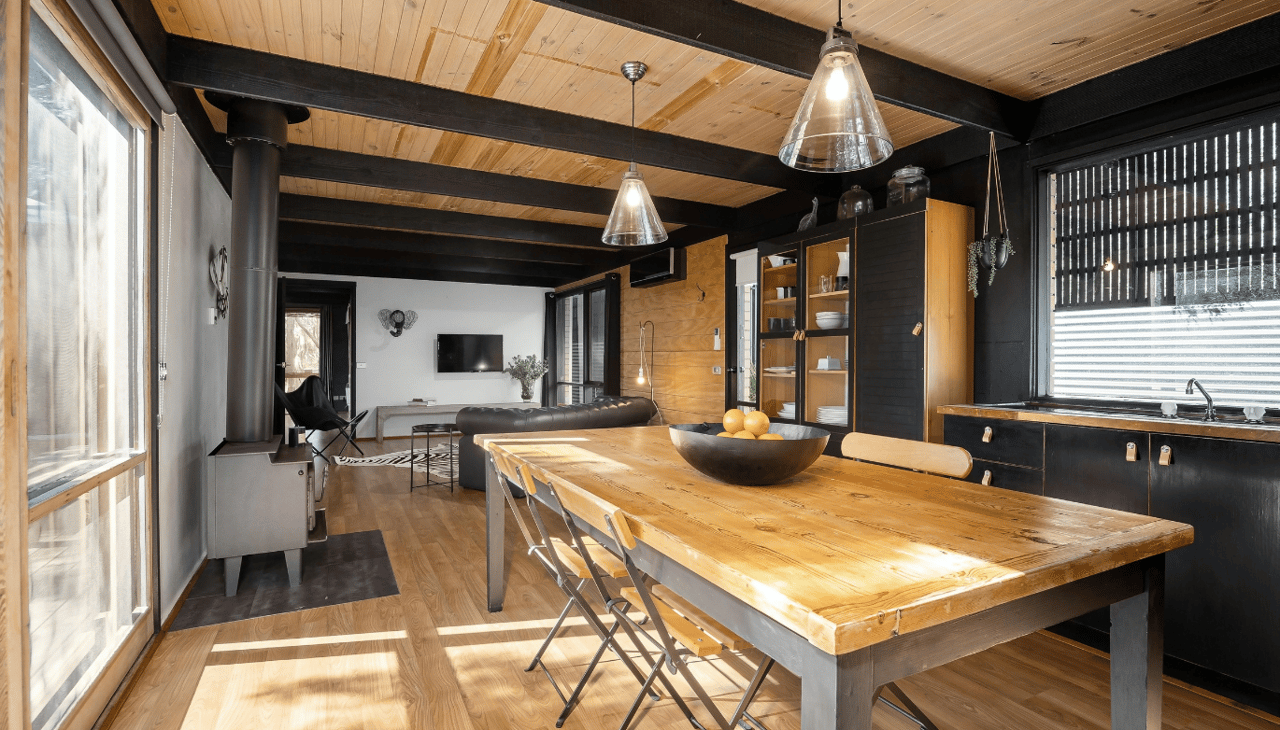As you approach retirement, it’s worth considering a change in your living arrangements. Downsizing isn’t just about moving into a smaller house—it’s about enhancing your lifestyle. Imagine swapping those unused rooms and constant maintenance for greater freedom, flexibility, and a simpler way of living. If you’re ready to embark on this new chapter, let's explore the benefits of downsizing and how to make the transition smoothly.
Why Downsizing Makes Sense Before Retirement
With the kids grown and gone, you may find that you don’t need as much space anymore. Downsizing, often referred to as "rightsizing" for seniors, can be a strategic move to not only boost your retirement savings but also create a more comfortable and manageable living environment. By opting for a smaller home, you free up both your budget and your time, allowing you to truly enjoy your retirement years.
Downsizing Means Lowering Your Bills
One of the biggest perks of moving to a smaller home is the potential savings on your monthly expenses. A smaller home typically means lower mortgage payments, reduced property taxes, and decreased homeowners insurance. Utility bills, like heating and cooling, are usually less expensive in a smaller space, and with fewer rooms to maintain, your maintenance costs will likely drop as well. As Realtor.com puts it, "A smaller home typically means lower bills and less upkeep." These savings can significantly enhance your lifestyle, whether you’re looking to travel, indulge in hobbies, or simply enjoy a more relaxed financial cushion.
By downsizing before retirement, you’re not just moving into a smaller space—you’re upgrading your lifestyle and positioning yourself for a more fulfilling and financially secure future.
5 Tips To Simplify the Downsizing Process
1. Assess Your Needs and Priorities
Begin your downsizing journey by evaluating your current and future needs. Reflect on how much space you truly require and which features are most important to you in your next home. Consider accessibility, proximity to loved ones, and the type of community where you want to live. This self-assessment will clarify your goals and ensure that your downsizing move aligns with your retirement plans.
2. Declutter and Organize
Downsizing means letting go of items that no longer serve you. Start decluttering your home by focusing on possessions you no longer use or need. While this process can be emotional, it’s important to stay practical. Donate, sell, or give away items in good condition that no longer fit your lifestyle. By decluttering early, you’ll streamline the moving process and ensure only the essentials come with you to your new home.
3. Understand Your Financial Situation
Before making any decisions, take a close look at your financial situation. Determine the value of your current home and assess the equity you’ve built up. Research the real estate market in areas you’re considering for your next home to understand what’s affordable. Consulting a financial advisor can also ensure your downsizing plan aligns with your broader retirement strategy. Knowing your budget will help you make informed choices about your new home.
4. Work with a Real Estate Professional
Partnering with an experienced real estate agent, like The Geiger Stern Team, can greatly simplify the downsizing process. A skilled agent will help you set the right price for your current home, guide you through the selling process, and assist in finding a new home that meets your needs and budget. Their insights into the local market and expertise in navigating transactions will ensure you make the most of your downsizing experience.
5. Plan for a Smooth Transition
Once you've addressed your needs, decluttered, and understood your finances, it's time to plan your move. Consider the timing, logistics, and any necessary preparations for your new home, such as renovations or adjustments to make it more comfortable. Preparing in advance will help ensure a smooth and stress-free transition to your new, right-sized living space.
If You Want to Retire in the Next 3 Years, Here’s What You Need to Prepare Now
If retirement is on your horizon within the next few years, now is the time to get your financial house in order. Transitioning from saving to withdrawing requires careful planning, especially when it comes to asset allocation and optimizing your retirement accounts for tax advantages. Here’s a guide to help you get ready.
1. Evaluate Your Current Financial Situation
Begin by taking a comprehensive look at your current financial status. Review your savings, investments, debts, and any sources of retirement income, such as pensions or Social Security. It’s also crucial to understand the equity you have in your home and how that can be leveraged in your downsizing plan. Knowing where you stand financially will help you set realistic goals as you approach retirement.
2. Assess Whether Your Portfolio Is Retirement-Ready
As you near retirement, it's essential to ensure your investment portfolio is properly aligned with your goals. The money you've saved should be positioned to generate the income you’ll need while managing risk effectively. Reevaluate your asset allocation to make sure it supports your retirement objectives and provides the financial security you’re relying on.
3. Set a Budget for Your New Home
If downsizing is part of your retirement plan, determine how much you’re willing to spend on a new, smaller home. Factor in all costs, including closing costs, property taxes, insurance, and potential renovations. Also, consider ongoing expenses like utilities and maintenance, which are often lower in a smaller home. Setting a clear budget will help you avoid overspending and ensure your new home fits within your financial plan.
4. Consult a Financial Advisor
Before making major decisions, consulting a financial advisor is a smart move. They can help you understand the long-term impact of downsizing on your retirement strategy. An advisor can provide insights into how to best use the proceeds from selling your current home, whether for investing, paying off debt, or boosting your retirement savings. They can also help you plan for unexpected expenses and ensure your downsizing decision aligns with your overall financial health.
5. Consider Tax Implications
Downsizing can come with tax implications, particularly if your home has appreciated significantly. Be mindful of capital gains taxes and how they could affect your financial situation. You may qualify for exemptions, but it’s crucial to understand the rules and plan accordingly. A tax professional can guide you through these complexities, helping you make informed decisions.
6. Calculate Your Retirement Withdrawal Strategy
Determining how much to withdraw in retirement is key to maintaining financial stability. Many financial planners recommend a 4% withdrawal rate as a general guideline. For instance, if you have $1 million in your 401(k), this could provide an annual income of $40,000, adjusting for inflation. However, if you need more, dipping into your principal could impact your long-term financial security. It's important to balance your withdrawals to sustain your retirement funds.
By preparing financially and taking these steps now, you can make your downsizing experience smooth and secure, setting yourself up for a comfortable and enjoyable retirement.
If you have questions or need guidance on preparing for retirement, reach out to The Geiger Stern Team. We have a network of Preferred Partners, including financial advisors, professional movers, storage companies, and our trusted CPA, who are ready to help you every step of the way.







